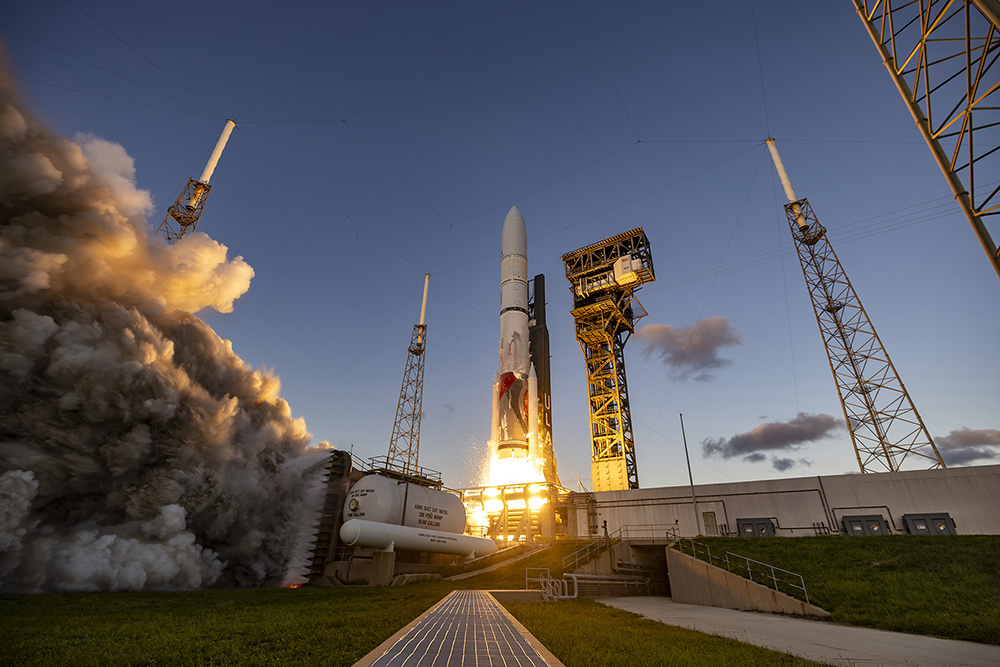Latest News

ULA launches the second Vulcan mission on October 4, 2024. Photo: ULA
United Launch Alliance (ULA) launched the second Vulcan rocket on Friday morning. While ULA reported the launch was successful, it also reported an “observation” on one of the solid rocket boosters. A slight variation can be observed from the launch broadcast at 37 seconds into the mission.
“We had an observation on one of our solid rocket boosters (SRB) that we are reviewing but we are overall pleased with the rocket’s performance and had a bullseye insertion,” ULA President and CEO Tory Bruno commented in the news release.
Bruno posted on X that there was a nozzle anomaly that was compensated for by the booster, saying that orbital insertion “was perfect.”
The Federal Aviation Administration (FAA) said in a statement the agency is aware an anomaly occurred involving one of the solid rocket boosters. “No public injuries or public property damage have been reported. The FAA is assessing the operation and will issue an updated statement if the agency determines an investigation is warranted,” the FAA said.
The mission took off at 7:25 a.m. EDT on October 4 from Space Launch Complex-41 at Cape Canaveral Space Force Station in Florida. This was the second Vulcan mission after the inaugural launch in January, and the second of two test flights required for ULA’s certification process to fly Vulcan missions for the U.S. Space Force.
Because ULA’s goal for the flight is to receive Space Force certification, the mission did not have a traditional payload. The original customer, Sierra Space’s Dream Chaser spaceplane, was not ready for flight and ULA decided to move forward self-funding the mission with a dummy payload, in order to complete the certification.
Bruno said in a press call this week that if the flight is clean, the certification process will be finished in a matter of weeks. Once the Space Force completes the evaluation, the Vulcan rocket will be certified to launch national security missions.
Once ULA receives the certification, the launcher plans to launch two more Vulcan missions for the Space Force before the end of 2024 – USSF 106 and USSF 87.
U.S. Space Force’s Space Systems Command partnered with ULA on the launch and called it an “important milestone for the nation’s strategic space lift capability.”
“The Space Force’s partnership with launch companies, such as ULA, are absolutely critical in deploying on-orbit capabilities that protect our national interests. We are already starting to review the performance data from this launch, and we look forward to Vulcan meeting the certification requirements for a range of National Security Space missions,” commented Brig. Gen. Kristin L. Panzenhagen, SSC’s Program Executive Officer for Assured Access to Space, and Commander of Space Launch Delta 45.
ULA is currently competing for Space Force launches under the National Security Space Launch (NSSL), Phase 3 contract. Bruno said this week that ULA submitted proposals and be believes the launcher is “in a very good position” to compete. ULA is competing with SpaceX and Blue Origin for launch task orders in a window that lasts through June 2029, with an option for another five years.
ULA has sold more than 70 Vulcan missions and is working to significantly increase its launch cadence in 2025 — targeting up to 20 missions next year between the Atlas and Vulcan rockets.
Get the latest Via Satellite news!
Subscribe Now